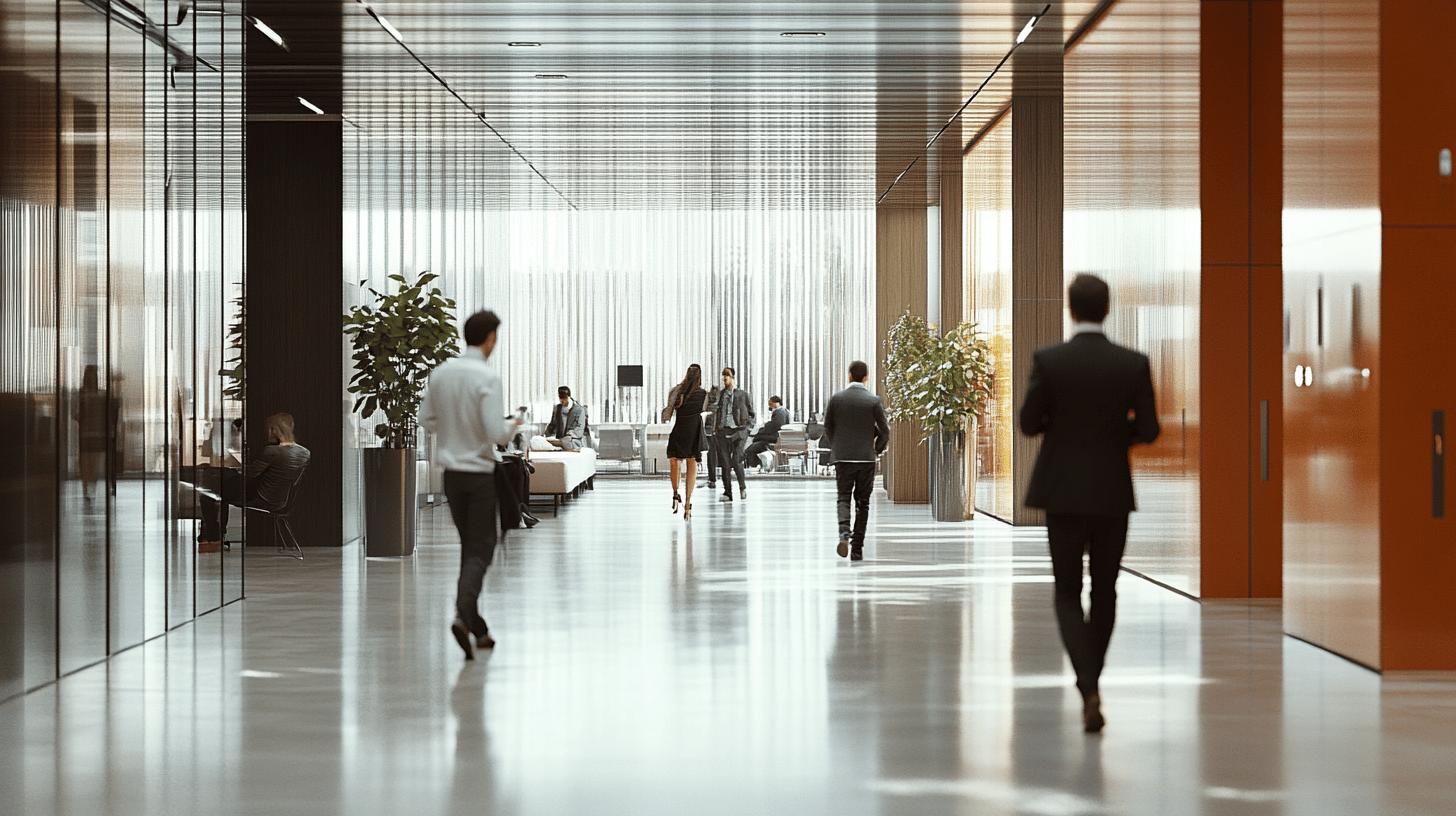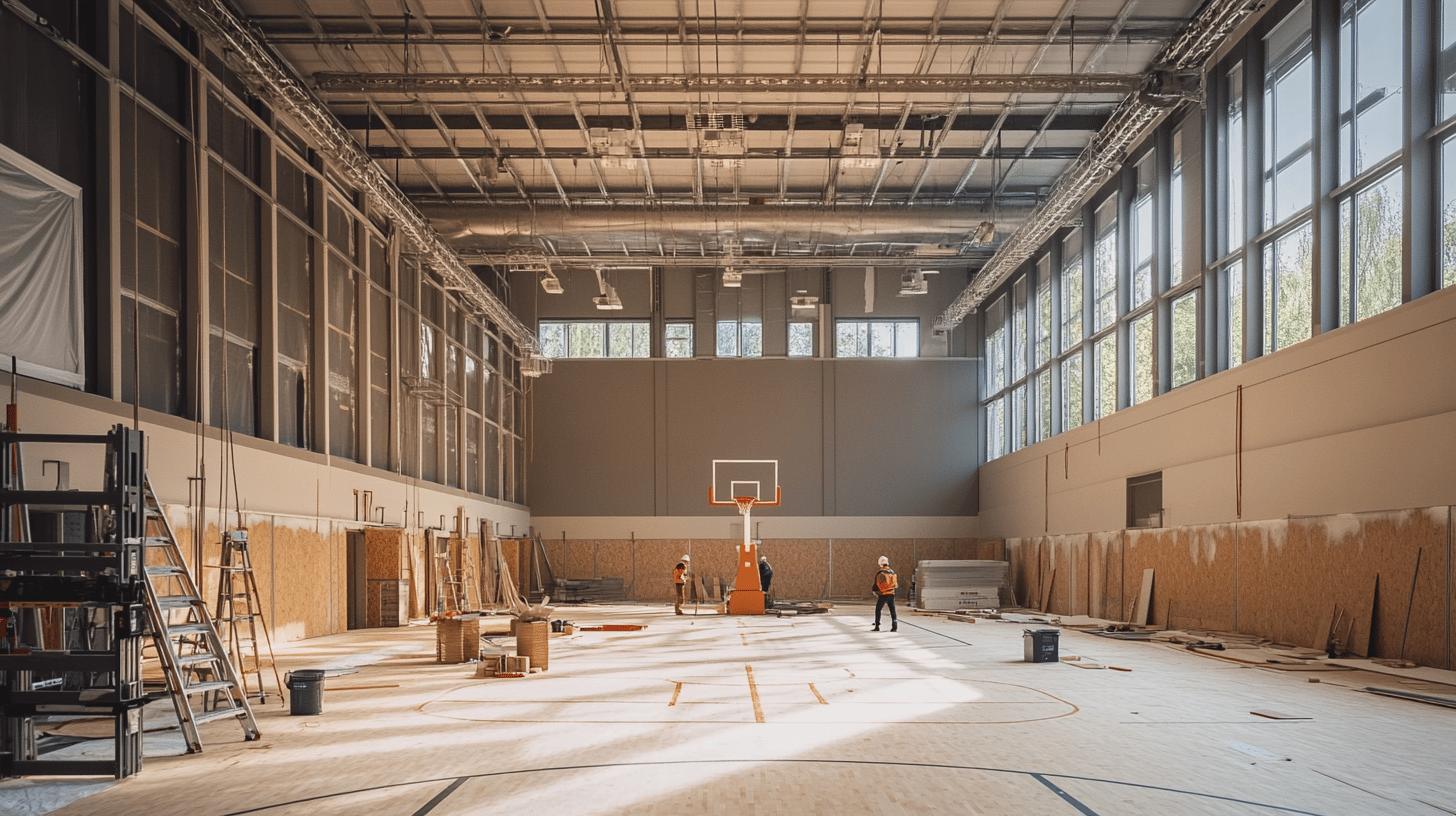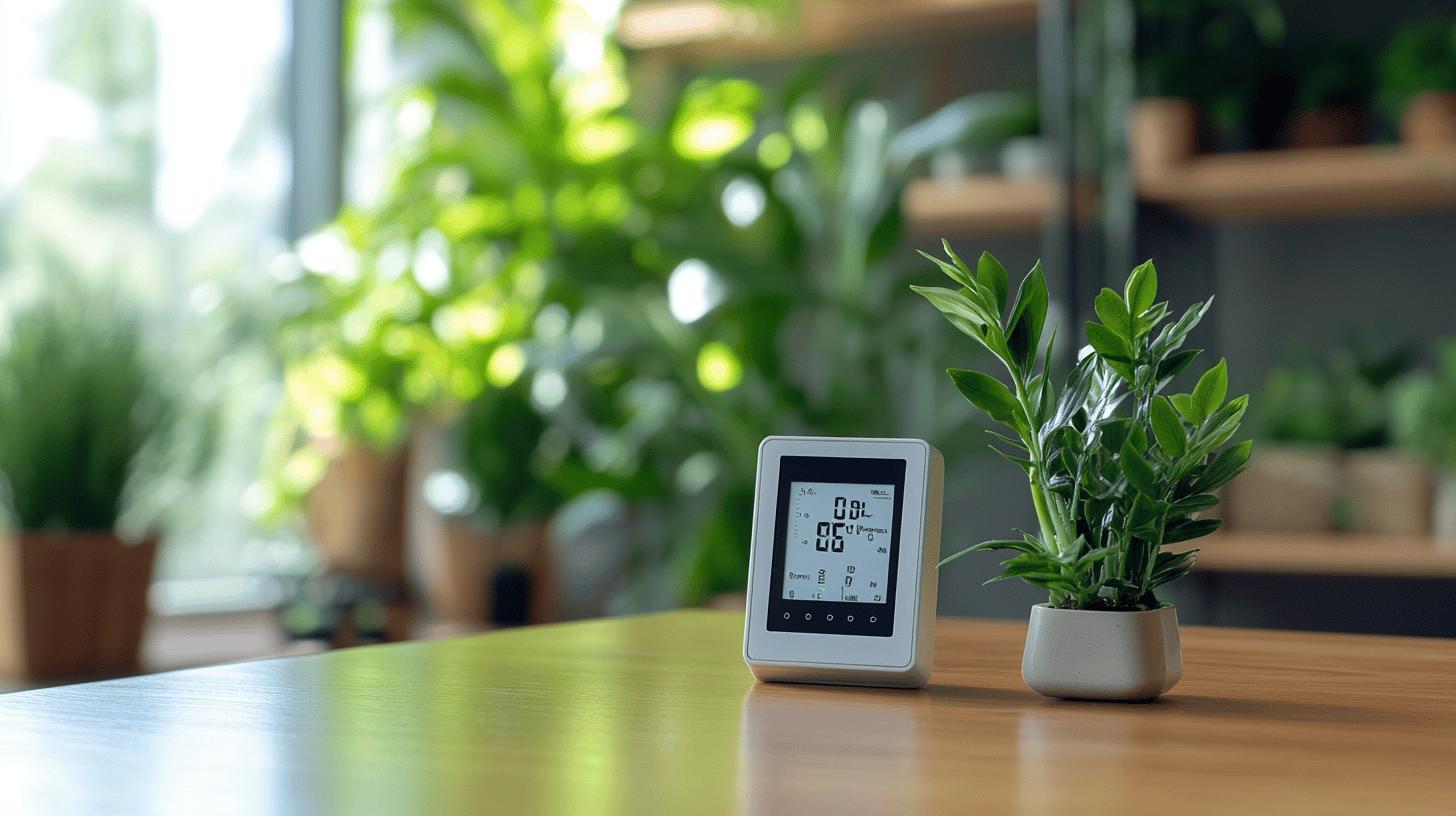Alright, so you’ve probably heard about sports floors, right? Well, there’s this really cool thing called ShockPad Technology that’s changing the game. It’s all about making sports surfaces better, safer, and just generally more awesome for athletes. We’re going to dig into what ShockPad Technology actually is, how it works, and why it’s becoming a big deal in sports facilities everywhere.
Key Takeaways
- ShockPad Technology uses special materials to make sports floors softer and safer.
- These pads help stop injuries and make sports performance better.
- They’re a big part of modern artificial grass systems, helping them last longer.
- ShockPads can be made for different sports, like football or multi-use courts.
- Picking ShockPads is a smart choice for sports facilities, offering good value.
.
Understanding ShockPad Technology

What is a ShockPad?
So, what exactly is a ShockPad? Well, in simple terms, it’s a layer of material installed beneath a sports surface, like artificial turf or a synthetic court. Its primary job is to absorb impact and provide cushioning. Think of it as the unsung hero working hard to protect athletes’ joints and reduce the risk of injuries. They’re usually made from materials like foam, rubber, or a combination of both, and come in various thicknesses and densities depending on the specific application.
Materials Used in ShockPad Construction
When it comes to ShockPad construction, the choice of materials is pretty important. You’ll typically find these materials being used:
- Recycled Rubber: A popular choice due to its durability and shock-absorbing properties. Plus, it’s environmentally friendly!
- Polyethylene (PE) Foam: Lightweight and offers good cushioning, often used in residential applications.
- Ethylene-Vinyl Acetate (EVA) Foam: Provides a balance of cushioning and support, commonly found in sports flooring.
.
The material used significantly impacts the ShockPad’s performance, longevity, and cost. Factors like density, thickness, and compression set are all considered to ensure the pad meets the required safety standards and performance criteria.
The Role of ShockPads in Sports Flooring
ShockPads play a pretty big role in modern sports flooring systems. They’re not just about comfort; they’re about performance and safety. Here’s a quick rundown of what they do:
- Impact Absorption: Reduces the force of impact on athletes’ joints, minimising the risk of injuries like concussions and sprains.
- Energy Return: Some ShockPads are designed to return energy to the athlete, improving performance and reducing fatigue.
- Surface Stability: Provides a stable and consistent surface for play, ensuring predictable ball bounce and player movement.
Without a ShockPad, sports surfaces can be hard and unforgiving, leading to increased risk of injury and reduced performance. They really are a game changer!
Benefits of ShockPad Technology for Athletes
Enhanced Player Safety and Injury Reduction
ShockPad technology significantly reduces the risk of injuries. The cushioning absorbs impact, lessening the strain on joints and muscles. This is especially important in high-impact sports like football and rugby. A good sports flooring system can make all the difference.
- Reduced concussion risk
- Decreased joint stress
- Lower muscle fatigue
.
ShockPads act as a buffer between the athlete and the hard surface, distributing force more evenly. This minimises the chance of acute injuries like sprains and fractures, and also helps prevent chronic conditions caused by repetitive stress.
Optimal Ball Rebound and Performance
It’s not just about safety; ShockPads also improve performance. The consistent surface allows for predictable ball bounce, which is crucial in sports like basketball and tennis. This consistency gives players confidence in their movements and reactions.
Consider this:
| Feature | Impact on Performance | Benefit |
|---|---|---|
| Even Surface | Predictable Bounce | Improved accuracy and control |
| Energy Return | Reduced Energy Loss | Players maintain speed and agility |
| Shock Absorption | Less Joint Strain | Players can train and compete for longer |
Improved Comfort and Reduced Fatigue
Athletes spend hours training and competing, so comfort is key. ShockPads provide a more forgiving surface, reducing fatigue and allowing players to perform at their best for longer. Using a shock pad can help with this.
- Increased comfort during play
- Reduced muscle soreness after exercise
- Improved overall endurance
.
ShockPad Technology in Artificial Turf Systems

Integrating ShockPads with Artificial Grass
Artificial turf has become a popular choice for sports surfaces, playgrounds, and landscaping. But what really makes it shine is the addition of a shockpad. A shockpad is essentially an underlay that sits between the artificial grass and the ground beneath. It’s usually made from materials like rubber, foam, or cork, and it adds a whole new level of performance and safety.
Think of it this way: without a shockpad, the artificial turf is just a surface. With a shockpad, it’s a system designed to protect athletes and improve their game. It’s adaptable to different field sizes and easy to install, saving on labour costs.
Longevity and Durability of Artificial Turf with ShockPads
One of the biggest advantages of using a shockpad with artificial turf is the increased lifespan of the surface. The shockpad acts as a buffer, absorbing impact and reducing wear and tear on the artificial grass fibres. This is especially important in high-traffic areas or sports fields that see a lot of use. Durability is key, and shockpads deliver.
Here’s a quick look at how shockpads contribute to the longevity of artificial turf:
- Reduced fibre degradation
- Protection against abrasion
- Maintained upright position of grass fibres
.
By preventing the grass from flattening and supporting the fibres, shockpads help the artificial turf look and perform better for longer. This means less frequent replacements and lower maintenance costs over time.
Water Drainage and Environmental Considerations
Good water drainage is vital for any sports surface, and shockpads play a key role in this. Many shockpad designs incorporate drainage channels or permeable materials that allow water to flow freely through the system. This prevents water from pooling on the surface, which can create slippery conditions and affect play. Plus, some shockpads are made from recycled materials, making them an environmentally friendly choice.
Here’s a table showing the benefits of shockpads for water drainage:
| Feature | Benefit |
|---|---|
| Drainage Channels | Prevents water pooling |
| Permeable Materials | Allows water to flow through the system |
| Reduced Runoff | Minimises environmental impact |
Advanced ShockPad Solutions for Various Sports
Tailored ShockPads for Football and Rugby Pitches
When it comes to football and rugby, the demands on a sports surface are immense. Players need to be able to sprint, tackle, and fall without risking serious injury. That’s where tailored shockpads come in. These aren’t your run-of-the-mill cushioning layers; they’re specifically designed to meet the unique needs of these high-impact sports. The primary goal is to reduce the risk of concussions and joint injuries.
- Enhanced shock absorption for high-impact collisions.
- Consistent performance across the entire pitch.
- Compliance with stringent sports regulations.
.
Using the right shockpad can significantly improve player safety and performance. It’s about finding the right balance between cushioning and support.
Specialised ShockPads for Multi-Purpose Sports Facilities
Multi-purpose sports facilities present a different challenge. You might have basketball one day, volleyball the next, and then a community event on the weekend. The flooring needs to be versatile enough to handle it all. Specialised shockpads for these facilities are designed with adaptability in mind. They need to provide adequate cushioning for a range of activities without compromising performance for any specific sport. Think of it as a jack-of-all-trades, master of some.
- Variable density options for different zones.
- Durable materials to withstand heavy use.
- Easy integration with various surface types.
.
ShockPad Applications in Indoor and Outdoor Arenas
Whether it’s an indoor basketball court or an outdoor athletics track, the environment plays a crucial role in shockpad performance. Indoor arenas offer a controlled environment, allowing for more consistent performance. Outdoor arenas, on the other hand, need shockpads that can withstand the elements – rain, sun, and temperature fluctuations. The key is to choose materials that are both durable and weather-resistant. For example, football shock pads are designed to withstand heavy use and provide optimal shock absorption.
- UV resistance for outdoor applications.
- Moisture management to prevent degradation.
- Temperature stability for consistent performance.
.
| Feature | Indoor Arenas | Outdoor Arenas |
|---|---|---|
| UV Resistance | Not critical | Critical |
| Moisture Control | Important | Very Important |
| Temp. Stability | Less Critical | Critical |
Installation and Maintenance of ShockPad Systems
Simplified Installation Processes
Getting a ShockPad system installed isn’t usually too complicated, but it’s worth knowing what’s involved. The basic idea is to create a level surface, roll out the ShockPads, and then secure them before putting the sports surface on top.
- First, the sub-base needs to be properly prepared. This means making sure it’s level and compacted. Any bumps or dips will affect the performance of the ShockPad.
- Next, the ShockPads are rolled out. Some come with adhesive strips to stick them together, or you might need to use tape or glue.
- It’s important not to overlap the pads unless the manufacturer says it’s okay. Overlapping can create unevenness.
.
It’s always a good idea to check the manufacturer’s instructions, as different ShockPads might have slightly different installation methods. Paying attention to these details can save a lot of hassle later on.
Ensuring Long-Term Performance and Stability
To keep your ShockPad system working well for years, a bit of care is needed. Regular checks can spot problems early.
- Inspect the surface regularly for any signs of wear or damage. This could be anything from tears to unevenness.
- Make sure the area is properly drained. Water build-up can damage the ShockPad over time.
- Follow the manufacturer’s guidelines for cleaning and maintenance. Some cleaning products might not be suitable.
.
Repair and Foundation Considerations
Even with good maintenance, things can sometimes go wrong. Knowing how to handle repairs and foundation issues is important.
- Small tears or damage can often be repaired with patches or sealant. It’s best to use products recommended by the ShockPad manufacturer.
- If the foundation shifts or settles, it can cause the ShockPad to become uneven. This might require lifting the surface and re-levelling the base.
- For major damage, it might be necessary to replace sections of the ShockPad. This is usually a job for professionals.
.
Here’s a simple table showing common issues and potential solutions:
| Issue | Solution |
|---|---|
| Small tears | Patch with manufacturer-approved sealant |
| Uneven surface | Re-level the sub-base |
| Water build-up | Improve drainage |
| Major damage | Replace damaged sections |
The Science Behind ShockPad Cushioning
Elasticity and Shock Absorption Principles
ShockPad technology relies heavily on the principles of elasticity and shock absorption. Elasticity refers to the material’s ability to return to its original shape after being deformed by a force. Shock absorption, on the other hand, is the process of dissipating the energy from an impact, reducing the force transmitted to the surface below. The ideal ShockPad balances these two properties to provide both cushioning and a responsive feel.
Impact Force Distribution and Energy Return
When an athlete impacts a surface equipped with ShockPad technology, the pad works to distribute the force over a wider area. This reduces the pressure on any single point, minimising the risk of injury. Furthermore, the material is designed to return some of the energy back to the athlete, aiding in propulsion and reducing fatigue. Here’s a simplified view:
- Impact: Force applied to the surface.
- Distribution: Force spread across the ShockPad.
- Absorption: Energy converted into heat or deformation.
- Return: Portion of energy returned to the athlete.
.
Material Composition and Performance Characteristics
The performance of a ShockPad is intrinsically linked to its material composition. Common materials include rubber, foam, and various polymers, each offering different levels of elasticity, durability, and shock absorption. shock pad manufacturer often tailor the material blend to meet the specific needs of different sports and applications. For example, a football pitch might require a denser, more resilient material than a playground surface. The thickness of padding for artificial turf on concrete also plays a significant role, with thicker pads generally providing greater cushioning.
The key to effective ShockPad design lies in carefully selecting and combining materials to achieve the desired balance of shock absorption, energy return, and durability. This ensures optimal performance and safety for athletes.
Comparing ShockPad Technology with Traditional Flooring
Advantages Over Conventional Sports Surfaces
ShockPad technology offers several key advantages over traditional sports flooring. The most significant benefit is enhanced shock absorption, which reduces the risk of injuries. Traditional surfaces, like concrete or asphalt, offer minimal cushioning, leading to greater impact stress on athletes’ joints. ShockPads provide a consistent and reliable level of cushioning, regardless of the area on the playing surface.
- Improved safety for athletes
- Consistent performance across the entire surface
- Reduced risk of long-term joint problems
.
ShockPads are designed to distribute impact force more evenly, minimising pressure points and creating a safer playing environment. This is particularly important for high-impact sports where falls and collisions are common.
Cost-Effectiveness and Long-Term Investment
While the initial investment for ShockPad systems might be higher than traditional flooring, the long-term cost-effectiveness is often better. Traditional surfaces may require frequent repairs and resurfacing due to wear and tear. ShockPads, especially when used with artificial turf, can extend the lifespan of the playing surface, reducing the need for frequent replacements. Maintenance costs are also generally lower, as ShockPads are designed to withstand heavy use and varying weather conditions.
Consider this:
| Feature | Traditional Flooring | ShockPad Technology |
|---|---|---|
| Initial Cost | Lower | Higher |
| Maintenance Cost | Higher | Lower |
| Lifespan | Shorter | Longer |
| Injury Risk | Higher | Lower |
Meeting International Sports Standards
Many international sports federations now have strict standards for sports flooring, particularly regarding shock absorption and impact resistance. ShockPad technology is designed to meet and often exceed these standards, ensuring that facilities are compliant and safe for athletes. Traditional flooring may struggle to meet these requirements, potentially limiting the types of events that can be hosted and increasing liability risks. Using ShockPads can help facilities gain certifications and approvals from relevant sporting bodies, enhancing their reputation and attracting more events.
Thinking about new flooring for your sports hall? Our special ShockPad Technology offers a real step up from old-style floors. It’s designed to be super comfy and safe, helping to prevent injuries and make sports more fun for everyone. Want to see how it works? Head over to our website to learn more about our amazing sports hall flooring installations.
Conclusion
So, that’s the lowdown on ShockPad technology. It’s pretty clear this stuff is a game-changer for sports floors, right? We’re talking about making things safer for athletes, which is a big deal, and also helping sports surfaces last longer. It just makes sense, really. This tech is definitely pushing things forward in the world of sports facilities. It’s exciting to see what comes next.
Upgrade to ShockPad → Wooden Sports Flooring
Frequently Asked Questions
What exactly is a ShockPad?
A shock pad is a special layer put under sports floors, like those for football or rugby. It’s usually made from materials such as rubber, cork, or foam. Its main job is to absorb impacts, making the surface safer and better for playing on.
What materials are used to make ShockPads?
Shock pads are made from different materials, but the most common ones are rubber, cork, and various types of foam. These materials are chosen because they’re good at soaking up energy from impacts.
How do ShockPads help athletes?
Shock pads make sports surfaces safer by reducing the force of impacts, which means less stress on players’ bodies and fewer injuries. They also help the ball bounce better and make the surface more comfortable, so players don’t get tired as quickly.
Can ShockPads be used with artificial grass?
Yes, shock pads are very important for artificial grass pitches. They go under the turf to provide cushioning, improve how the ball bounces, and make the pitch last longer. They also help with water drainage and make the surface safer for players.
Is it hard to put in and look after ShockPad systems?
Installing shock pads is usually quite straightforward. Once they’re in, they help the sports surface perform well for a long time. If any part gets damaged, it can often be repaired without needing to replace the whole thing.
What’s the science behind how ShockPads cushion?
Shock pads work by using materials that can absorb and then release energy. When something hits the surface, the pad squashes down to soak up the impact, then springs back. This reduces the force on players and helps the ball bounce properly.


